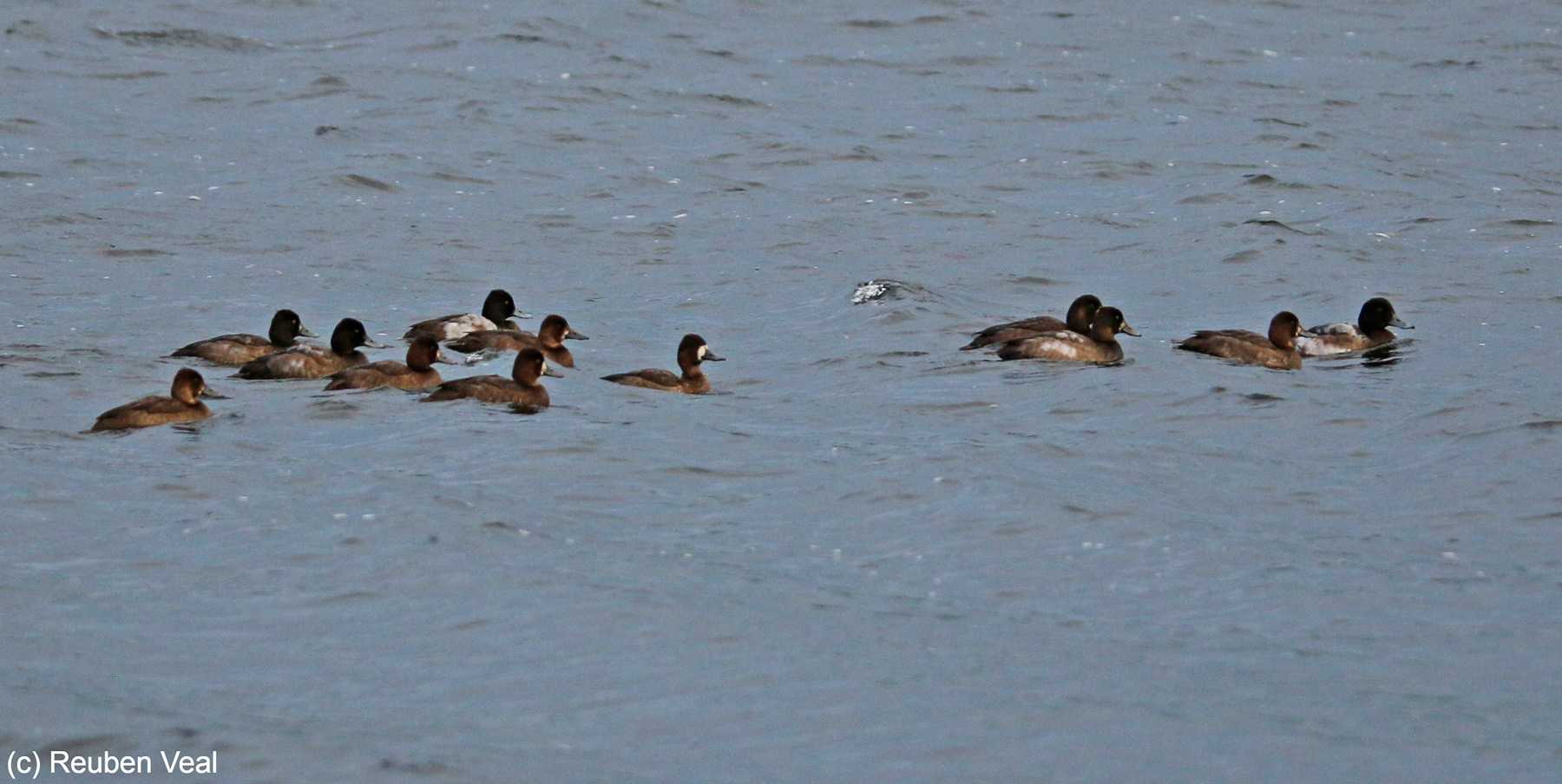My annual university reading-week break back home in Cornwall had started excellently with a hat-trick of Cornish ticks, consisting of Long-billed Dowitcher, Red-throated Pipit and the well-watched Upland Sandpiper. An all-too-brief grey 'yellow wagtail' at Marazion proved frustrating. Having done some actual university reading and revising (beyond the usual bird books) on Saturday 28 October, I was keen for a full day in the field on Sunday. The forecast didn't look great, and it proved to be a classic late October day trudging around in strong westerlies and occasional showers reiterating that it 'only takes one bird' …
Some 25,000 steps and seven hours scouring prime Cornish valleys had returned highlights of a Merlin and a Firecrest. As fantastic as it always is to be birding these areas, morale was somewhat ebbing, especially having just got thoroughly soaked at Bartinney. It was now around 3 pm and I was keen to get back to Drift Reservoir on my way home, wondering whether the arrival of a duo of Lesser Scaup on Dozmary Pool and a Surf Scoter at Loe Pool could coincide with something at Drift.
I arrived at the dam car park to see at least five diving duck in front of the hide in the north-west arm. Drift is a fantastic place for scarcities and oddities, but even five Tufted Duck would be somewhat notable here, so I was keen to press on and get closer. I reached the first bay and focused my 'scope on the group. There were 12 birds – and, more significantly, they all appeared to be scaup! I have been birding properly in Cornwall since 2016 and not once seen a Greater Scaup count close to this number in that time. Indeed, this one flock would beat the entire county's annual totals for 2015 and 2016.

Ten Lesser Scaup and two Greater Scaup (fourth from right and far right), Drift Reservoir, Cornwall (Reuben Veal).
I quickly realised that the decision to leave my camera in the car was a poor one, so I dashed back to the car park before returning for better views. At this point I was working on the assumption that they would be Greater Scaup, but there had to be a decent chance I may be able to pluck out a Lesser, so my camera was key. Yet as I was walking back out to the hide, I began to question this assumption. I had only looked at these birds for a couple of minutes at long range before retrieving the camera, but the majority of their heads seemed noticeably peaky at the rear. As silly as I thought the suggestion of multiple Lesser Scaup was, the penny was beginning to drop.
Just as yet another shower was arriving, I made it into the hide and opened the slats to reveal a beautiful sight – all 12 birds actively feeding at close range! It was time to get grilling. Small nails, peaked hindcrowns and their smallish size were all apparent … but surely not, right? I switched to looking solely through my camera, with the shutter speed cranked up waiting for one to flap, and thankfully I didn't have to wait long. My immediate reaction to the back of the camera isn't repeatable here, but I was met with the classic Lesser Scaup wing pattern of a nice white panel in the secondaries immediately contrasted by grey on the inner primaries. The penny that had been tumbling over the last half-hour hit the deck hard. I had a flock of Lesser Scaup on the east side of the Atlantic!

Eight Lesser Scaup and two Greater Scaup (right-hand pair), Drift Reservoir, Cornwall (Reuben Veal).
With my eye now in, and with the major blocking assumption that 'they simply can't be Lesser Scaup' safely aside, sorting through the flock became easier. Two birds, a male and female, larger in size and with considerably more rounded heads were present among the flock – but it was only two. I was settling on 10 Lesser and two Greater. That was quite possibly the craziest bird news message I'd ever sent!
At this point I was joined in the hide by Paul St Pierre and Mashuq Ahmad, armed as ever with useful knowledge on the birds in question. With all of the scaup in a close-knit flock, away from the two Tufted Duck that were also present, it seemed likely that all had arrived together. Their rate of feeding, coupled with the fact that the reservoir had been checked by another local birder a few hours earlier, also suggested they were recently arrived. So, did that mean the Greater Scaup had crossed the Atlantic as well? If they were of the North American subspecies nearctica they could be the first records for Britain.

The flock of 10 Lesser Scaup is the largest ever recorded in Britain (Reuben Veal).
We set about getting photographs of these two birds, noting that the head shape of the drake at least was rather flat-topped. Calling out the Greater Scaup whenever they resurfaced among the flock of Lesser Scaup was slightly bonkers. Unfortunately, by now we were about out of light, so headed back to the car park, still in a state of disbelief.
As I write this, the Greater Scaup require further study as a couple of features don't sit perfectly for nearctica, but that aside it had been an incredible afternoon with the British-record flock of Lesser Scaup. As much as I enjoyed my new birds earlier this week, not one comes close to the thrill of finding and working out these transatlantic quackers. All the unproductive hours that day and earlier in the autumn were forgotten – and I'm already back out hoping for the next oddity!

Lesser Scaup, Drift Reservoir, Cornwall (Reuben Veal).


